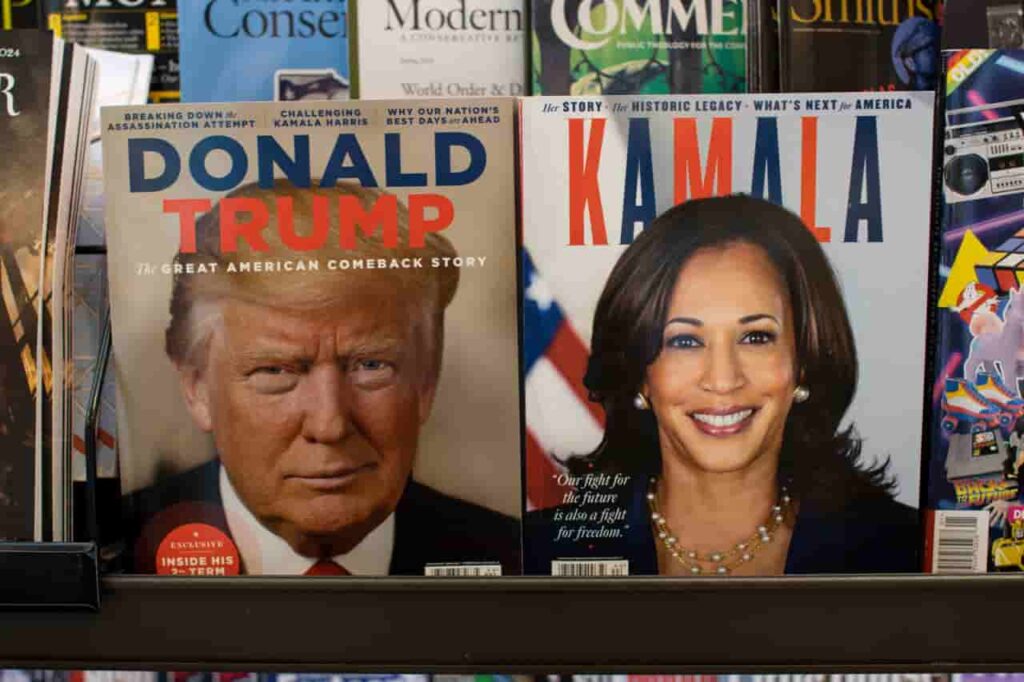Despite the Commodity Futures Trading Commission (CFTC) objections, elector betting was tenuously legalized in the U.S. on October 3. This means that, in some ways, the focal point for the wagers has moved from the international Polymarket to the residents-only Kalshi.
By October 10, Republican candidate Donald Trump had taken the lead over Vice President Kamala Harris in the prediction market, and by October 11, he had further expanded it.
Specifically, the chart tracking the betters’ favorite shows Harris keeping a close lead – usually 51% vs 49% – between October 4 and October 10. Then, Trump shot above the Vice President and, at press time, stands at 52%.
Why the Kalshi market is important
The change in Kalshi is particularly noteworthy, despite Polymarkets showing a decisive lead for Trump in recent weeks, as it more closely reflects the stance of U.S. voters.
Indeed, despite having many opponents worldwide, Trump is internationally popular among genuine supporters and accelerationists alike.
Additionally, the ability to monitor where Americans believe the elections will lead is particularly interesting as the Presidential race has been nothing short of exciting ever since President Joe Biden dropped out.
Polymarket charts – relevant as they go farther back than Kalshi’s – show Trump in a decisive lead until Harris’ entry and then a sequence of frequent changes in voters’ favorites.
Why CFTC is against election betting
The CFTC’s argument against election betting covers multiple facets and multiple dangers of the phenomenon. To begin with, the Commission believes that prediction markets like Kalshi are clear examples of gambling and should be regulated as such.
Furthermore, the agency has warned that these platforms are susceptible to manipulation – indeed, some allegations of manipulation on Polymarket emerged in early September – and that they may erode public trust in the democratic process, particularly should the practice involve large amounts of money.
Rostin Behnam, CFTC Chair, also expressed his concern that legalization could force his agency to intervene in political matters – a scenario apolitical watchdogs seek to avoid.
Finally, as of October 11, the CFTC is still attempting to contest the ruling on the elections prediction market.
Why prediction markets may not be a reliable alternative to polls
Despite gaining popularity as an alternative to traditional polls, prediction markets may not be a reliable predictor of election results.
To begin with, it is possible that there is an overlap between those willing and able to risk money betting and Republican party supporters.
Though much work has been done to rebrand the GOP as an everyman party, the Country Club Republican roots run deep and are still relevant, as evidenced by the continued prominence of politicians like Mitt Romney.
The same trend that may skew prediction markets in favor of Trump can also work against Harris, especially given the allegations she is a socialist or a communist.
It is worth remembering that such claims are mostly based on the misconceptions once humorously described by the economist professor Richard Wolff:
Socialism is when the government does stuff. And it’s more socialism the more stuff it does. And if it does a real lot of stuff, it’s communism.
Still, none of this is to say that platforms like Kalshi don’t have a place in gauging the possible election winner, as they, at the very least, provide the ability to track sentiment in real time.
Furthermore, although the argument that the demographics likely to engage with prediction markets can make the figures less reliable remains valid, historical studies have shown that the impact is likely minimal and that there is a relatively broad representation across the political spectrum when it comes to political betting.
Traditional polls can likewise be skewed depending on the sample size, polled demographics, and polling company.









